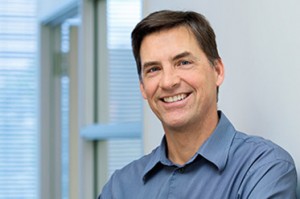Stories
RMW architecture & interiors celebrates 45 years of design in 2015. Last month Tom Gerfen, RMW’s Chairman of the Board, looked back at how the company formed and built a legacy. This month, the firm’s President Russ Nichols gives insight into RMW’s forward momentum.
 When Russ took the helm in 2011, his vision was of a firm led by a group of entrepreneurial principals who embody the “seller-doer” model, engaging in market development while also remaining hands-on through active project management, supported by a group of up-and-coming designers. The model has fostered a collaborative culture in the firm and allowed RMW to pursue multiple sectors, including commercial offices, laboratories, industrial & manufacturing, and civic work.
When Russ took the helm in 2011, his vision was of a firm led by a group of entrepreneurial principals who embody the “seller-doer” model, engaging in market development while also remaining hands-on through active project management, supported by a group of up-and-coming designers. The model has fostered a collaborative culture in the firm and allowed RMW to pursue multiple sectors, including commercial offices, laboratories, industrial & manufacturing, and civic work.
We sat down with Russ to talk about the changes he’s seen since he first joined the firm in 1985, and what trends might shape the future.
How has the role of the architect changed over the past few decades?
Everything we do is different: the tools, the process, the delivery methods. The entire process has been turned on its head. Demographics are changing, communication is changing, the relationship to workplace is changing.
We used to have more control over the process, as architects. We drove the process. Part of the shift has been that we have to be more responsive to our clients, more collaborative. And this results in better design.
People come into the field now for different reasons. When I first started 30 years ago, the profession was filled with people whose only interest was design and architecture. Then it became about technology – people got into it because they loved CAD [Computer Assisted Design]. Now the technology is second nature, embedded in everything we do, and the interest in design is back. But now there’s recognition that design isn’t top-down. Everyone’s a designer now. Great ideas can come from anywhere. This adds to the discussion and the energy.
Everyone wants to find room to be contemplative. You have to consciously build that in.
How has what clients want or expect changed?
Clients still expect us to bring the same end result: good design. But they also expect us to be smart about their business. They expect us to be strategists who can give them an advantage in the marketplace. For a long time in the commercial office market the strategy was all about the “war for talent,” and we were asked to bring solutions that drew people in. Then the cycle was about efficiencies and fitting more people in the space. Interestingly, these two elements have now aligned. We’re in a moment where the workforce does everything 24/7, and the places where we work, eat, and play are all integrated. People want to find community in effective, efficient, and energizing spaces, and it doesn’t matter whether that’s an office or a café or a home or retail environment.
What would you say RMW’s core purpose for being is?
At the end of the day we’re a business like any other and need to have a strong business strategy. This year is a reminder that every day we carry 45 years of solid history forward. You step back and let go of all that and it goes back to just loving the work and the people around you – the people you bring in. As a group our core purpose is to inspire one another, to feed that energy and that passion. So I’d say be methodical in business and ride the energy!
How do you define success? What does that look like for RMW today?
I don’t think we’re doing the right thing unless we’re advocates for good design. And “good design” is measured by the success it brings to our clients. We’ve survived for 45 years predominately through repeat client referrals – that is the key to what we do.
The other piece is how we support, nurture, and grow young design talent. Creating an environment where they can succeed. As a company, as we near the 50-year mark this is more relevant now than ever.
People want to find community in effective, efficient, and energizing spaces.
What trends do you anticipate affecting the industry in the coming years?
For us, being focused on high tech clients is the primary challenge. The exciting part of ingenuity is it never stays constant. How do you stay ahead of that? You can get sucked into the trends and design in circles. Our clients live in an environment where failure is a norm. You try something, it fails, you try again. As architects we don’t have that luxury. We need to create something more sustainable. How can you be flexible but also a voice of reason, and create a space that can adapt? A trend is just that – if you just follow trends more often than not you’ll end up with something that’s not sustainable.
Tech continues to be a tool. Sometimes it speeds the time of delivery. If that continues the hope would be that as we save production time we gain space to think. It’s the thought process that makes design exciting, the exploration and discovery. Our clients want an experiential process. Everyone wants to find room to be contemplative. You have to consciously build that in. The challenge is to create an environment for that, where we can collaborate and evolve.